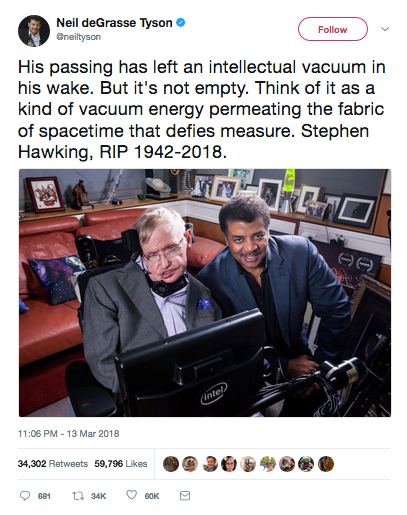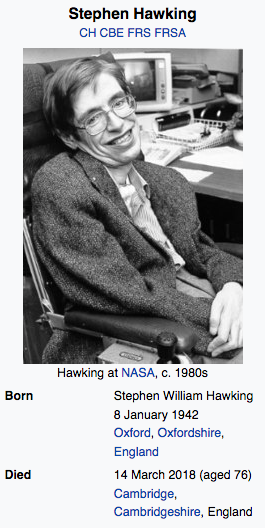Ja beste bezoeker ik
weet het, de kop is wat te snel door de bocht, daar lang niet alle
wetenschappers overtuigd zijn van de theorie dat je via het centrum
van een groot massief en ronddraaiend zwart gat door een wormgat (Einstein-Rosen brug) kan reizen naar een ander universum'. Zo zijn er legio wetenschappers die stellen dat je als spaghetti uit elkaar zal worden getrokken.
Jake
Anderson van The Mind Unleashed schreef een artikel over deze zaak en
greep daarvoor terug op de film Interstellar, daar een aantal
wetenschappers n.a.v. deze film op zoek gingen of het inderdaad
mogelijk is dat je via een ronddraaiend zwart gat kan reizen naar een
ander universum. (Interstellar is overigens een geweldige film, mocht je deze nog niet hebben gezien)
Uiteraard
kunnen deze wetenschappers niet bewijzen dat het mogelijk is, echter
computersimulaties geven aan dat het mogelijk zou kunnen zijn.
In het
artikel is verder niets geschreven over tijdreizen, echter als je via
een zwart gat zou kunnen reizen, is het zeer wel mogelijk dat je op
die manier kan tijdreizen; daarover zo meer. Om zo'n zwart gat te kunnen bereiken
is al een ongelofelijk lange tijd nodig. Voor de aarde ligt het
dichtstbijzijnde ronddraaiend zwarte gat op 27.000 lichtjaren, ofwel
zelfs als we met de snelheid van licht kunnen reizen, doen we daar
nog 27.000 jaar over......
Vooralsnog
is de snelheid van het licht de maximumsnelheid die de wetenschap en
daarmee de mens kent. Einstein stelde al dat wanneer je met de snelheid van het licht kan reizen, de tijd die je dan meemaakt veel langzamer zal gaan dan de tijd die op de aarde verstrijkt. Anders gezegd: mocht het mogelijk zijn dat je via een
zwart gat kan reizen, moet de snelheid die je daarvoor maakt veel hoger liggen dan de
lichtsnelheid en kan je dus daadwerkelijk in de tijd reizen.....
Terug in de tijd gaan zal wellicht niet mogelijk zijn (daar gaat de
wetenschap vooralsnog van uit), echter als reizen in de toekomst
mogelijk is, zou in deze theorie ook reizen in het verleden mogelijk moeten zijn.....

(een still uit de film Interstellar)
Stephen
Hawking heeft een aantal jaren geleden zijn verjaardag alleen
toegankelijk gemaakt voor tijdreizigers, echter er verscheen geen
tijdreiziger..... Mijns inziens is dat logisch, daar mocht het in een verre toekomst werkelijk mogelijk zijn om in de tijd te reizen, men
tijdreizigers zal verbieden zich kenbaar te maken, daar het
militair-industrieel complex deze techniek onmiddellijk zal
misbruiken, ofwel de huidige mens is veel te agressief en gewelddadig voor
dergelijke wetenschap.....
Beste
bezoeker, je las het al, veel 'als en zou', echter de idee van reizen
naar een ander universum en daarmee reizen in tijd, is altijd een
leuk onderwerp voor filosofische oefeningen. En wie weet........
Zoals gezegd, het artikel werd geschreven door Jake Anderson, werd eerder gepubliceerd op The Mind Unleashed en werd door mij overgenomen van Anti-Media:
Scientists Now Believe Black Holes Could Be Portals to Other Galaxies
June
6, 2019 at 10:44 pm
Written
by The
Mind Unleashed
(TMU) —
In Christopher Nolan’s epic 2014 science fiction film Interstellar,
a rogue splinter group of scientists constituting the collapsed
remnants of NASA hatch a plan to save Earth from environmental
collapse by searching for potentially habitable planets in a distant
galaxy. They get there by traveling through a wormhole and using the
gravitational slingshot velocity of a massive black hole.
Though
it’s been a recurring theme in science fiction for decades, a black
hole itself has never been considered a feasible form of space travel
because scientists have always believed that the mysterious tidal
forces inside the event horizon would spaghettify and crush anything
that dared to enter it.
But
scientists now say new simulation models are suggesting that a
rotating black hole, which contains a unique “mass
inflation singularity,”
may actually offer safe passage to another part of the galaxy—or a
different galaxy altogether.
The
team of physicists from UMass Dartmouth and Georgia Gwinnett College
say their simulations show
the singularity at the center of a large, rotating black hole could
actually facilitate a “gentle”
passage through rips in spacetime.
Physicist
Gaurav Khanna, his colleague Lior Burko, and his student Caroline
Mallary were inspired by the film Interstellar to
test whether its central character named Cooper, played by Matthew
McConaughey, could have theoretically survived a descent into the
film’s fictional black hole, Gargantua.
“The effects of the singularity in the context of a rotating black hole would result in rapidly increasing cycles of stretching and squeezing on the spacecraft. But for very large black holes like Gargantua, the strength of this effect would be very small. So, the spacecraft and any individuals on board would not detect it.”
Scientific
speculation concerning exotic properties of black holes has increased
in recent years. A 2016 study examined
the possibility of five-dimensional black holes shaped like rings
which violate the laws of physics, including Einstein’s theory of
general relativity. Another paper posited
that black holes deposit matter into the far future.
Realistically,
we likely won’t know anything substantial about the logistics of
traveling the stars via black holes within our lifetime. Humans are
still trying to visit the nearest planet in our solar system and the
nearest black hole, Sagittarius A*—which lurks 27,000 light
years away at the center of the Milky Way—is not even remotely
reachable without propulsion technologies that are decades, if not
centuries, from implementation.
However,
within our lifetime we may learn more about how quantum gravity works
inside of black holes—buoyed by new advanced telescopes
and research
methods—which
may tell us if it’s physically possible for hyperspace travel using
black holes. And even though we can’t do it, perhaps others in the
universe can.
=======================
Zie ook: 'Pentagon geeft toe onderzoek naar UFO's te doen' (beschavingen die van buiten ons zonnestelsel of zelfs vanuit onze eigen Melkweg onze aarde bezoeken, moeten al beschikken over methoden van tijdreizen)



